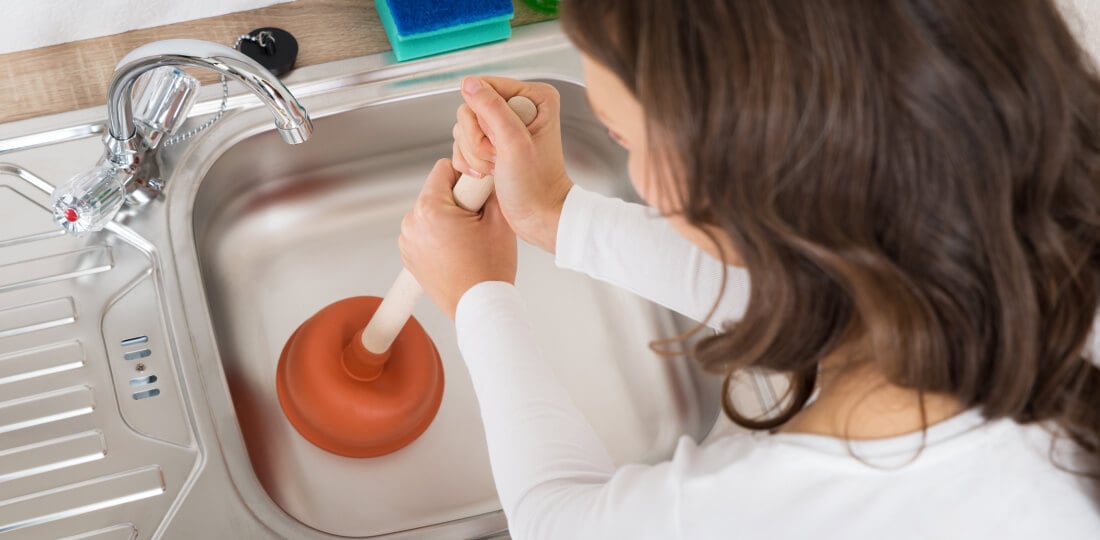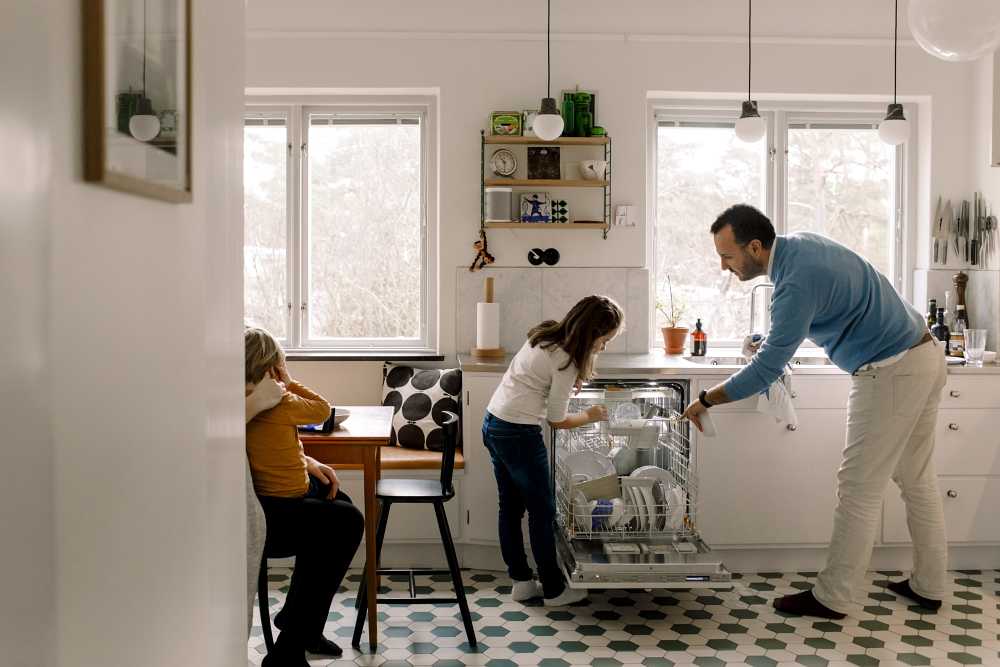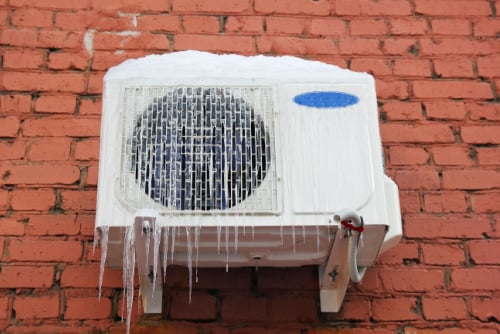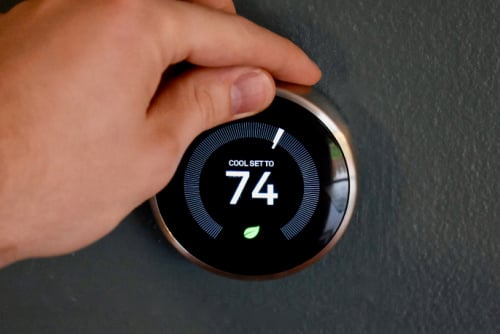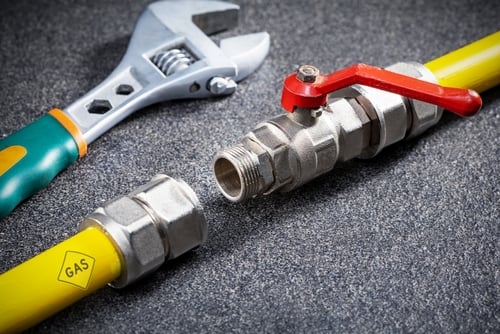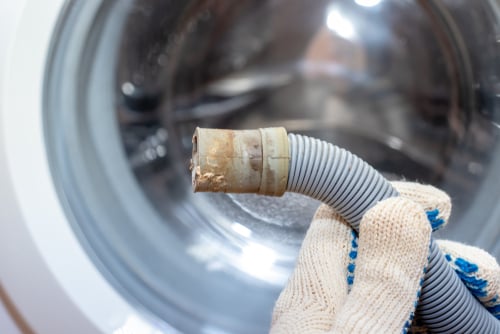Here are eight tricks to try before you pay a plumber.
Don’t pour money down the drain.
You might not realize how often you use the kitchen sink…till you can’t use it. With water backing up and a counter full of dirty dishes waiting to be washed, your first instinct might be to call the plumber. Resist the urge until you’ve tried all the tips and tricks for unclogging the sink yourself.
1. Garbage in, garbage not out?
Run your garbage disposal for a minute or two, along with the hot water. If that doesn’t clear the clog, turn it off and carefully inspect it to make sure it’s running properly. If the disposal has overheated and automatically switched off, restart it at the base—the switch should be on the side or bottom of the unit.
2. Take the plunge.
If clearing the disposal didn’t do the trick, reach for a common household sink plunger. It’s smaller than the one in your bathroom. If you have a double sink, first seal the drain on one side with a stopper. Create a tight seal by filling the other side of the sink with enough water to cover the bell of the plunger. Then plunge several times—and put some muscle into it. When you hear the suction clear the clog, remove the plunger and flush the drain with warm water for a couple minutes.
3. Boil it down.
If you’re still not in the clear, boiling water is the easiest and cheapest sink drainer of all.
Boil a kettle or pot of water on the stove. While you’re waiting, remove as much standing water from the sink as you can. Pour the boiling water into the sink and let it sit for a couple of minutes. If the water stands, let it cool, scoop it out, and repeat the process until it works—or till it’s clear that it won’t.
4. Make your own solution.
Before you resort to harsh, potentially harmful chemical cleaners, try mixing up a concoction of things you have on hand.
- Salt and boiling water: Remove as much standing water from the sink as you can. Then pour about half a cup of table salt down the drain, followed by about a quart of boiling water. Let it sit for a few minutes, then flush with hot water.
- Baking soda and vinegar: Pour about a cup of baking soda down the drain, then an equal amount of white or apple cider vinegar. The solution will soon start to bubble; when it subsides, put the stopper in and wait about 15 minutes. Then run hot water and repeat the process if needed.
- Baking soda and salt: Mix about a cup of baking soda with half a cup of salt and pour it down. After a few hours, flush with boiling water, and repeat if needed.
5. Snake it, don’t break it.
Chances are, you’ve got a handy tool in your bedroom closet. A wire coat hanger won’t reach as far as a plumber’s snake, but it’s worth a try. Unwind the looped end of the wire from the hook with needle-nose pliers. Straighten out the hanger as much as you can. Then fish it into the drain or “stub pipe” to push through or pull out the clog. Be careful not to scratch your sink. You may also want to buy a plastic drain clog remover tool. It’s designed to pull hair out of sinks and showers, but you can use it to grab stubborn food particles in your sink.
6. Try an auger unclogger.
If the coat hanger didn’t do the trick, head to the hardware store and pick up a plumber’s snake, or auger. Disassemble the drainpipe and P-trap in the cabinet under the sink to expose the “stub pipe” or “stub out” that travels behind the wall. Insert the snake into the pipe until you hit something. Now you can break up the clog.
7. Clean the P-trap. It's as simple as A-B-C.
The P-trap is that part of your sink’s drain pipe that’s shaped like, well, a P. You may have to get down underneath your sink to clear the clog. Put a pan or bucket under the drain to catch any water or debris. Then unfasten the P-trap from the drainpipe and clear out whatever’s stuck in there. Then replace the P-trap (making sure all connections are closed tight) and run warm water through the pipes for a few minutes.
8. Block the clog before it happens.
There are things you can do to prevent—or at least minimize—drain clogs. Don’t overload your garbage disposal. Feed in a little at a time and wait until it grinds and runs through completely before adding more. Never put bacon grease, coffee grounds, or oils down your kitchen drain or in your garbage disposal. And make sure you run plenty of water down the drain after each use.
At Frontdoor, we know you love getting things done around the house. Staying in control of your to-do list is easier when you can keep the small things from turning into bigger—and more expensive—ones. We’re here to make it easier to prevent problems instead of reacting to them. We help you gain the peace of mind that comes with staying on top of your home’s health.
Want to learn more about how to maintain and care for all your home's plumbing components and systems to keep things running smoothly? Download the app if you haven’t already, and chat with a helpful, friendly Frontdoor expert.
Frontdoor assumes no responsibility, and specifically disclaims all liability, for your use of any and all information contained herein.
Was this article helpful?
